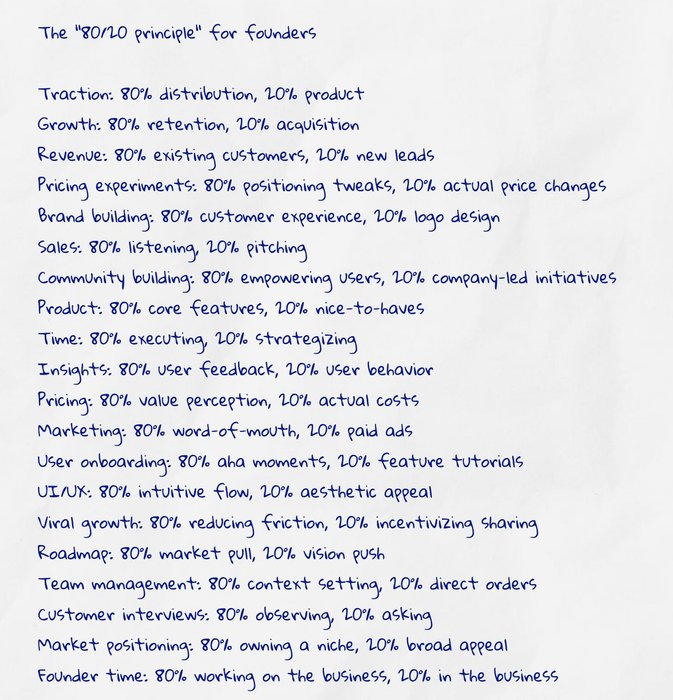
The "80/20 principle" for founders Traction: 80% distribution, 20% product Growth: 80% retention, 20% acquisition Revenue: 80% existing customers, 20% new leads Pricing experiments: 80% positioning tweaks, 20% actual price changes Brand building: 80% customer experience, 20% logo design Sales: 80% listening, 20% pitching Community building: 80% empowering users, 20% company-led initiatives Product: 80% core features, 20% nice-to-haves Time: 80% executing, 20% strategizing Insights: 80% user feedback, 20% user behavior Pricing: 80% value perception, 20% actual costs Marketing: 80% word-of-mouth, 20% paid ads User onboarding: 80% aha moments, 20% feature tutorials UI/UX: 80% intuitive flow, 20% aesthetic appeal Viral growth: 80% reducing friction, 20% incentivizing sharing Roadmap: 80% market pull, 20% vision push Team management: 80% context setting, 20% direct orders Customer interviews: 80% observing, 20% asking Market positioning: 80% owning a niche, 20% broad appeal Founder time: 80% working on the business, 20% in the business Prioritize the 80% that moves the needle. The rest is just noise.

